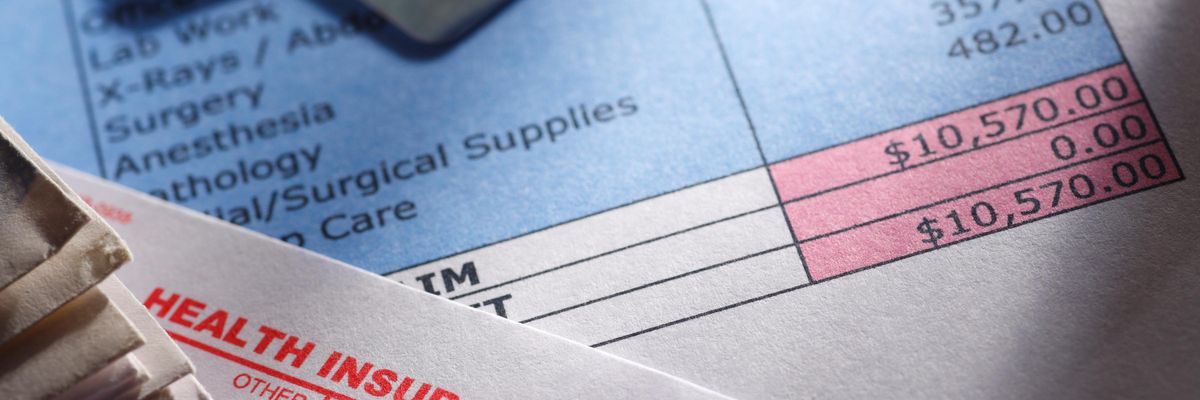A new study published Tuesday in the Journal of the American Medical Association shows that people in the United States now owe collection agencies a staggering $140 billion due to unpaid medical bills--making healthcare the nation's largest source of debt in collections.
The researchers estimate that in June 2020, roughly one in five people in the U.S. had medical debt in collections--meaning their debt had been sold to a third-party tasked with retrieving the money, often by harassing low-income people who are unable to pay.
"This is not a sign of a broken system," tweeted Charles Idelson, a spokesperson for National Nurses United. "It's a profiteering healthcare system working just the way the corporate price gougers want it to--and the collateral damage of those whose lives are harmed by unpayable, outrageously inflated debt is irrelevant to them."
According to the new study, medical debt was highest among people who live in the South, particularly in "lower-income communities in states that did not expand Medicaid." A dozen states, all controlled by Republicans, have refused to expand Medicaid under the Affordable Care Act, depriving millions of poor and vulnerable people of life-saving health coverage.
"If you think about Americans getting phone calls, letters, and knocks on the door from debt collectors, more often than not it's because of the U.S. healthcare system," Neale Mahoney, a health economist at Stanford University and lead author of the paper, told the New York Times.
To estimate the level of medical debt in collections in the U.S., the researchers examined consumer credit reports dated between January 2009 and June 2020--meaning the new figures reflect payments owed for healthcare provided before the coronavirus pandemic, which likely made it even harder for Americans to afford medical bills.
A new national survey conducted by the Commonwealth Fund found that more than a third of insured U.S. adults and half of uninsured adults had difficulties affording medical bills or paying off medical debt in the past year.
"They suffered ruined credit ratings. They were unable to afford basic life necessities like food, heat, or their rent," Dr. Sara Collins, the Commonwealth Fund's vice president for healthcare coverage, access, and tracking, told USA Today.
The findings of the new JAMA study suggest that medical debt has soared in recent years, given that 2018 research estimated that Americans held $81 billion in medical debt in 2016. Furthermore, the latest study necessarily understates the level of U.S. medical debt because it only analyzes debt in collections--not all unpaid bills owed to healthcare providers such as hospitals, which often hit uninsured patients with exorbitant prices.
"The increasing number of lawsuits that hospitals file against patients to collect debt, which can lead to legal fees or wage garnishments, are not included in the [$140 billion] figure," Times reporters Sarah Kliff and Margot Sanger-Katz noted Tuesday. "Nor are the medical bills that patients pay with credit cards or have on long-term payment plans."

